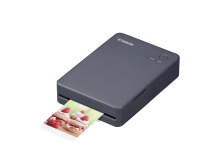To successfully integrate innovation, sustainability, and packaging, it is essential to focus on three key factors: the use of renewable raw materials, recyclability, and minimizing material usage.
Sustainability has been a key consideration in the non-food packaging industry for quite some time. However, finding sustainable alternatives for food packaging has proven challenging. In the food sector, the choice of packaging materials can significantly impact both the brand and the product itself. Those committed to environmentally friendly practices have often faced restrictions regarding color and design options. Additionally, it is crucial for packaging to ensure food safety, particularly in the refrigerated segment, where reliance on plastic blends has persisted.
Nevertheless, the food sector has seen a surge in innovation within the packaging industry, leading to the emergence of numerous inventive start-ups. Today, there are a variety of options available for safely and sustainably packaging products, allowing brands greater freedom in their communication and design choices.
Recycling dark colours
It is well understood that packaging printed in dark colors often fails to enter the recycling stream. Recycling facilities typically classify dark-colored packaging as residual waste, leading to its incineration, which in turn generates CO2 emissions.
Spies Packaging has collaborated with Digimarc and Reichle Technologiezentrum to create a digital watermark for packaging. This innovative, invisible marking encodes information about the material used, enabling recycling facilities to accurately sort waste. As a result, brand managers gain enhanced creative freedom in their design choices, allowing for more diverse and innovative packaging solutions while still supporting effective recycling processes.
Sustainable labels: polyethylene is replaced by sugar cane
Labels produced from bio-based PE film utilize sugarcane ethanol, completely eliminating the need for petroleum. These labels exhibit properties comparable to traditional polyethylene, making the transition to this sustainable film in the labeling process cost-effective and seamless for manufacturers. This innovation not only supports sustainability efforts but also maintains the performance standards expected in packaging.
Sugarcane is indeed a viable option for beverage packaging. Tetra Pak has been incorporating sugarcane-based plastic into its packaging solutions for some time. The Tetra Rex® cartons, which are primarily used for chilled dairy products, are made from a combination of this sustainable material and cardboard. This approach not only enhances the environmental profile of the packaging but also maintains the quality and safety standards required for food and beverage products.
Alternative raw materials – silphi fibre, graspaper and plastic from algae
In addition to traditional paper production, there is a growing trend towards using rapidly renewable raw materials for outer packaging. Cardboard boxes made from grass paper and silphia fiber are particularly well-suited for the gastronomy sector, take-away businesses, and retail sales. These cartons possess material properties comparable to conventional cellulose-based products, making them both printable and highly durable. This innovation not only supports sustainability efforts but also meets the practical needs of businesses in the food industry.
In the food sector, innovative plastic alternatives are emerging, including those made from algae and milk protein. Milk protein, in particular, offers the unique benefit of protecting food from spoilage, enhancing its shelf life. While printing on milk protein-based materials can be challenging, they can still be effectively utilized as inlays, coatings, or transparent outer packaging. In many instances, these materials are even safe for consumption, making them a versatile and sustainable option for food packaging solutions.
Sustainability scale for companies
The sustainability of packaging materials is now governed by the new EU Packaging Regulation, which primarily impacts start-ups in the industry. Existing companies are largely exempt from immediate compliance with this law. For start-ups, navigating the sustainability landscape can be challenging due to the multitude of options available in the market. The regulation evaluates not only the materials used in packaging but also factors such as energy efficiency during production and the recyclability of the packaging. This comprehensive approach aims to promote more sustainable practices across the packaging sector, encouraging new businesses to adopt environmentally friendly solutions.
The lack of transparency in sustainability information poses significant challenges for companies trying to assess the environmental impact of packaging materials. Many businesses struggle to identify which products meet sustainability criteria effectively. Additionally, it's important to note that not all sustainable materials provide the same level of protection or shelf life for food products. As a result, companies often face lengthy and costly testing processes to ensure that their chosen materials meet both sustainability standards and the necessary performance requirements for food safety. This situation underscores the need for clearer guidelines and resources to help businesses navigate the complexities of sustainable packaging.
In response to the challenges surrounding the assessment of packaging sustainability, various NGOs, including the UnternehmensGrün association and Ecopreneur.eu, are advocating for the development of a standardized scale for packaging materials. This proposed scale would provide a clear and transparent way for manufacturers to communicate the sustainability and food-friendliness of their packaging options. Similar to energy efficiency ratings, such as A+++, this scale would help consumers and businesses easily understand the environmental impact and suitability of different materials for food protection. By implementing this system, the goal is to enhance transparency in the market and support companies in making informed, sustainable choices.










